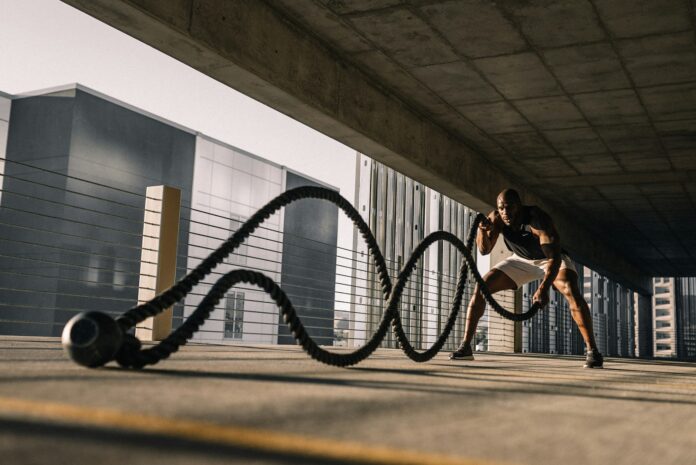High-intensity training (HIT) offers incredible benefits, including improved cardiovascular health, increased strength, and efficient calorie burning. However, the intensity of these workouts can also increase the risk of injury if not approached with care. To enjoy the benefits of HIT while minimizing the risks, follow these expert tips for staying safe and injury-free.
1. Warm Up Properly
Jumping into a high-intensity workout without warming up is a common mistake that can lead to injuries. A proper warm-up increases blood flow to your muscles, enhances flexibility, and prepares your body for the demands of HIT.
How to Warm Up
- Spend 5–10 minutes doing dynamic stretches such as arm swings, leg swings, or torso twists.
- Incorporate light cardio like jogging in place or jumping jacks to gradually raise your heart rate.
Why It Matters: Warming up reduces muscle stiffness and improves joint mobility, which helps prevent strains and sprains.
2. Focus on Proper Technique
Performing exercises with poor form increases the risk of injuries, especially during HIT when movements are performed quickly.
Tips for Maintaining Proper Form
- Learn the correct technique for each exercise before increasing intensity.
- Use a mirror or record yourself to check your form.
- If unsure, consult a trainer or watch reputable tutorials.
Why It Matters: Good form minimizes stress on joints and ensures that the right muscles are engaged during the workout.
3. Progress Gradually
It’s tempting to push your limits, but progressing too quickly can strain your muscles and joints, leading to overuse injuries.
How to Progress Safely
- Start with lower intensity or fewer repetitions, especially if you’re new to HIT.
- Gradually increase the weight, speed, or duration as your fitness improves.
- Listen to your body and avoid overtraining.
Why It Matters: Gradual progression allows your body to adapt and build strength, reducing the likelihood of injuries.
4. Wear Proper Footwear and Gear
The right gear can make a significant difference in reducing impact and providing stability during high-intensity workouts.
What to Look For
- Footwear: Choose shoes with proper arch support, cushioning, and grip suitable for your activity.
- Clothing: Opt for moisture-wicking, flexible fabrics that allow free movement.
- Accessories: Use gloves or straps for weightlifting to prevent blisters or strains.
Why It Matters: Appropriate gear provides the support and protection your body needs during intense exercises.
5. Incorporate Rest and Recovery
Rest is as important as training. Overtraining without adequate recovery leads to fatigue, which increases the risk of injuries.
Tips for Recovery
- Schedule rest days between high-intensity sessions.
- Incorporate active recovery, such as light yoga or walking.
- Use tools like foam rollers to relieve muscle tension.
Why It Matters: Recovery allows your muscles to repair and grow stronger, reducing the risk of overuse injuries.
6. Don’t Skip Cool-Downs
Cooling down helps your body transition back to a resting state and reduces muscle stiffness after a workout.
How to Cool Down
- Spend 5–10 minutes doing light cardio, such as walking or slow cycling.
- Perform static stretches targeting major muscle groups.
Why It Matters: Cooling down prevents blood pooling and helps flush out lactic acid, reducing post-workout soreness and stiffness.
7. Hydrate and Fuel Your Body
Dehydration and poor nutrition can impair performance and increase the risk of cramping or injuries.
Hydration Tips
- Drink water before, during, and after your workout.
- For longer sessions, consider adding an electrolyte drink.
Nutrition Tips
- Eat a balanced meal with protein and complex carbohydrates post-workout to aid muscle recovery.
- Use Myprotein supplements, such as whey protein or recovery shakes, to meet your nutritional needs. Visit Myprotein for high-quality options.
Why It Matters: Proper hydration and nutrition support energy levels, muscle recovery, and overall performance.
8. Listen to Your Body
Pushing through pain is a recipe for injuries. Learn to distinguish between normal discomfort from effort and warning signs of injury.
Signs to Watch For
- Sharp or persistent pain.
- Swelling or unusual stiffness.
- Reduced range of motion.
What to Do
- Stop the activity immediately if you feel pain.
- Rest and apply ice to the affected area.
- Consult a healthcare professional if the pain persists.
Why It Matters: Early intervention prevents minor issues from becoming major injuries.
9. Cross-Train to Avoid Overuse Injuries
Repeating the same movements can lead to overuse injuries, particularly during HIT.
How to Cross-Train
- Mix up your workouts with activities like swimming, cycling, or yoga.
- Incorporate both strength training and cardio to balance muscle groups.
Why It Matters: Cross-training reduces repetitive stress on specific muscles and joints, promoting overall fitness.
10. Use Modifications When Needed
High-intensity training can be scaled to suit any fitness level. Modifying exercises reduces strain while still delivering results.
Examples
- Replace jump squats with bodyweight squats.
- Use knee push-ups instead of standard push-ups.
- Opt for lighter weights or resistance bands.
Why It Matters: Modifications allow you to build strength safely and prevent injuries.
“The best workout is one that challenges your body without compromising your safety.”
How Myprotein Can Help You Stay Injury-Free
Support your HIT routine with premium products from Myprotein:
- Protein powders to aid muscle recovery.
- Electrolyte drinks to stay hydrated during intense sessions.
- BCAA supplements to reduce muscle soreness.
Visit Myprotein for supplements tailored to your fitness needs.
Conclusion
High-intensity training can transform your fitness level, but it’s important to prioritize safety to avoid setbacks. By warming up, focusing on technique, and listening to your body, you can enjoy the benefits of HIT while minimizing the risk of injuries.
For more fitness tips and expert advice, visit News Box. Remember, “prevention is the best cure—train smart and stay strong.”

